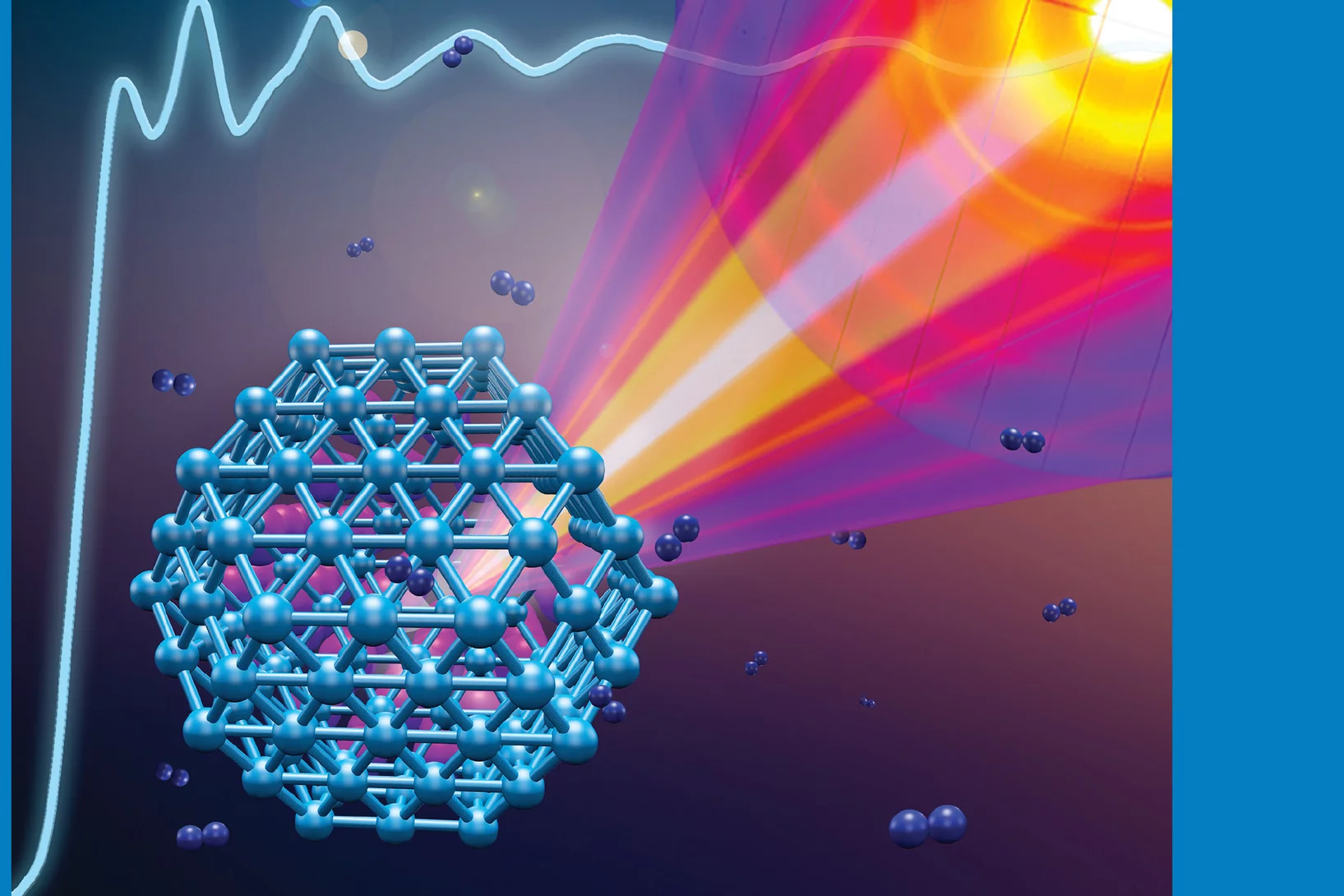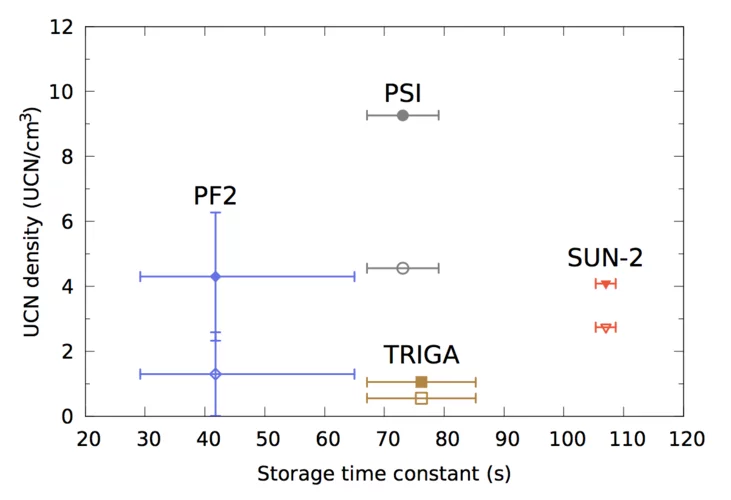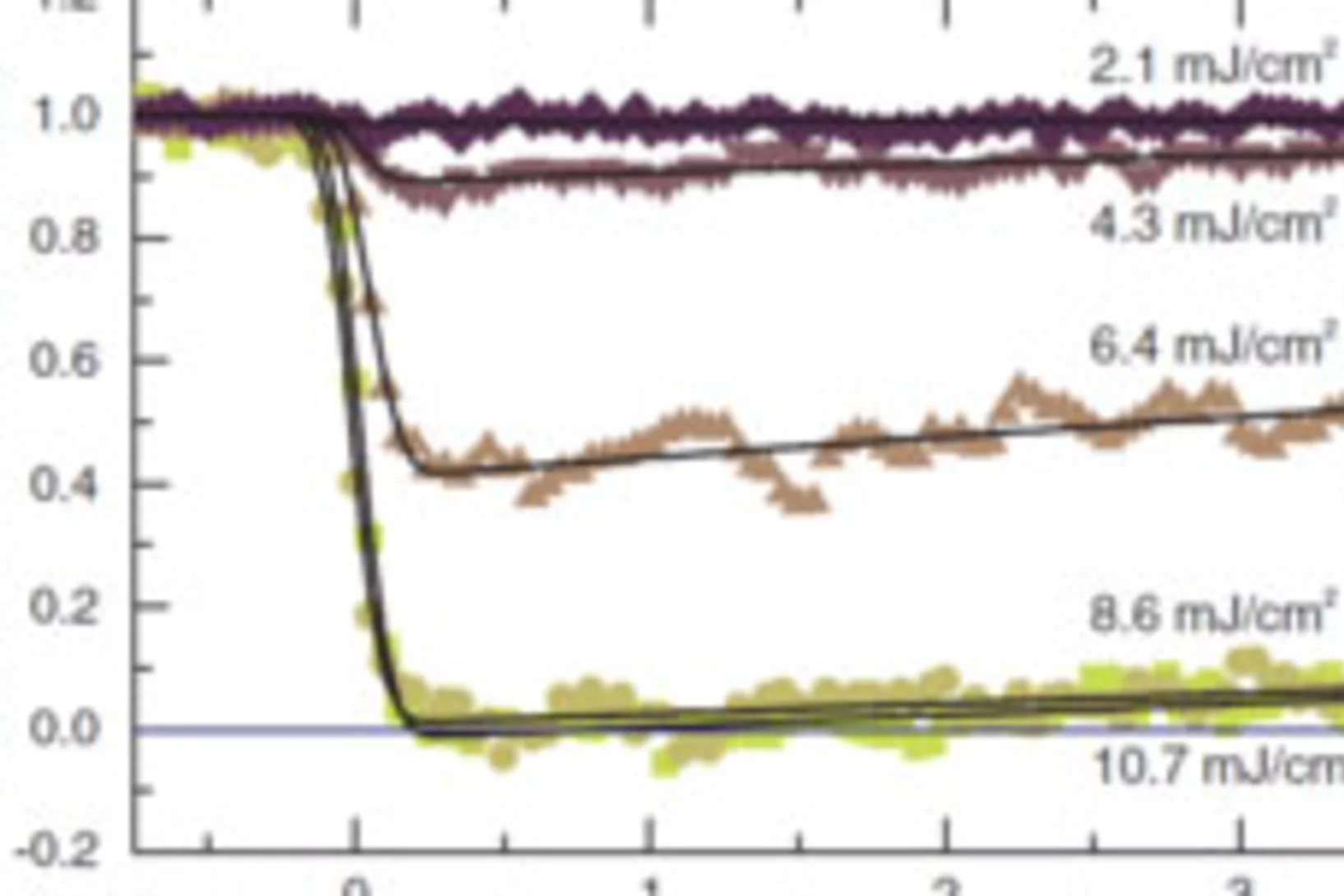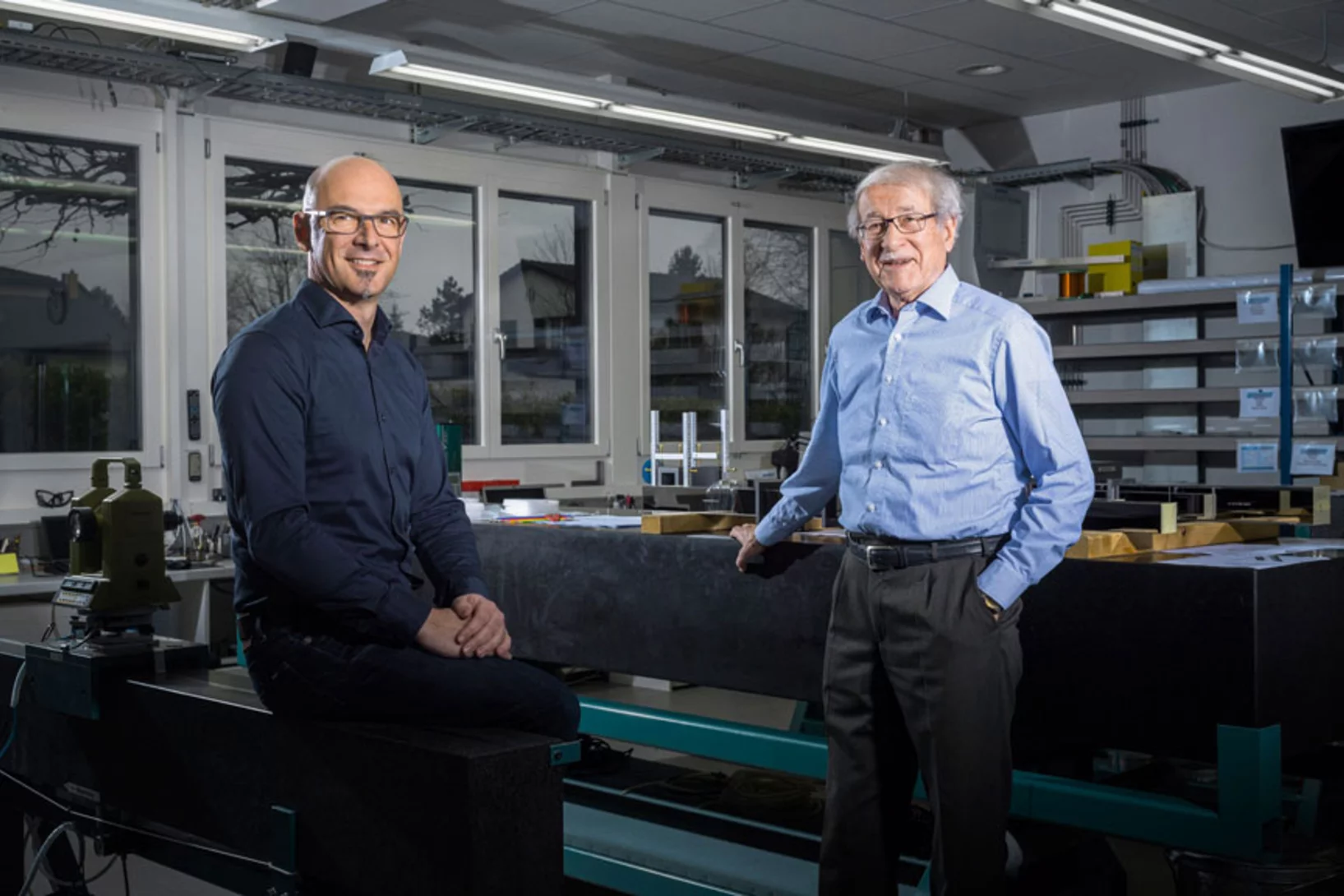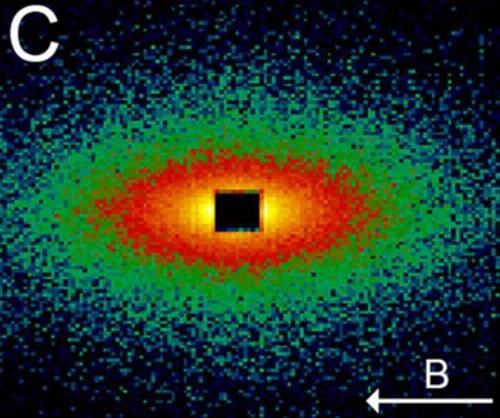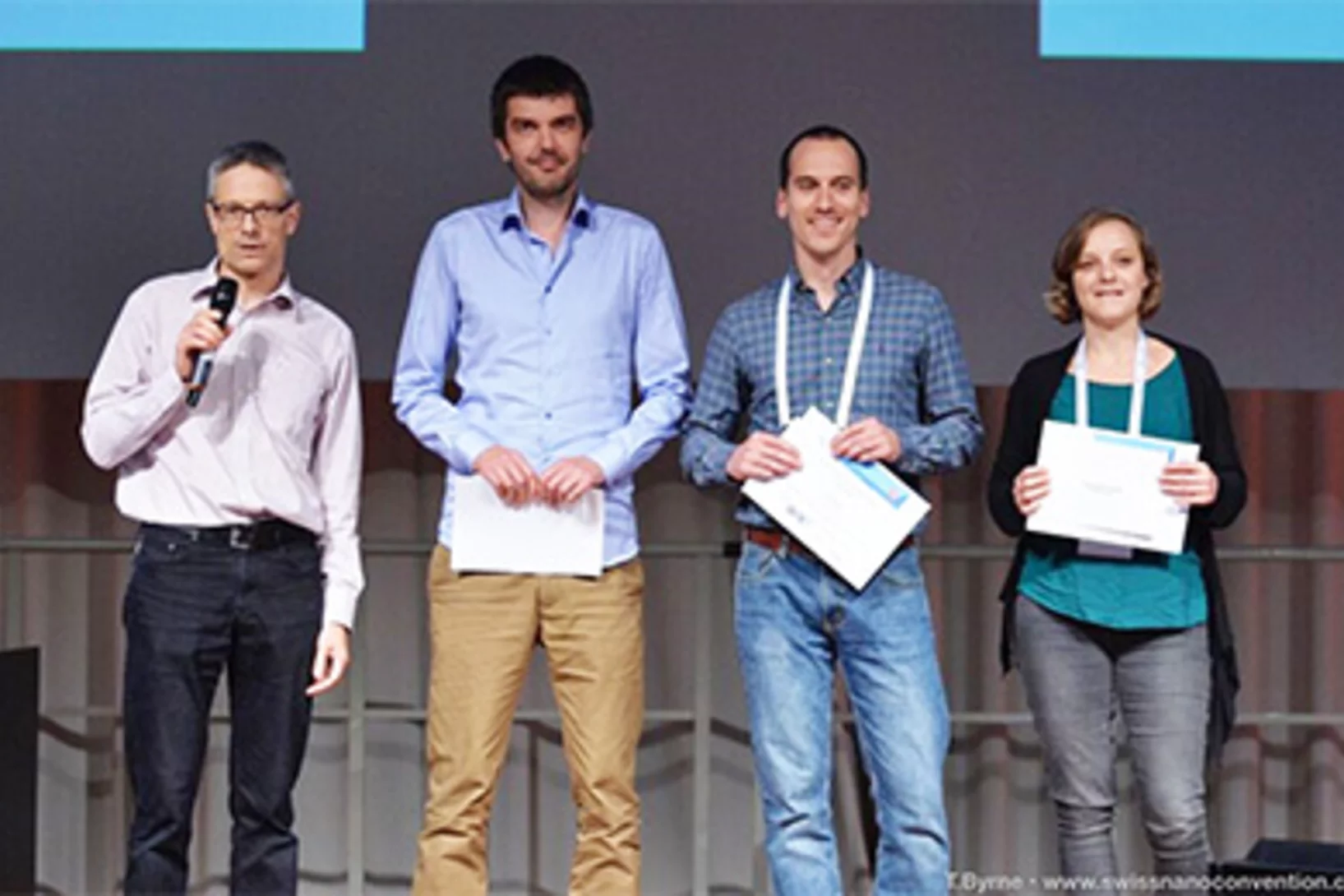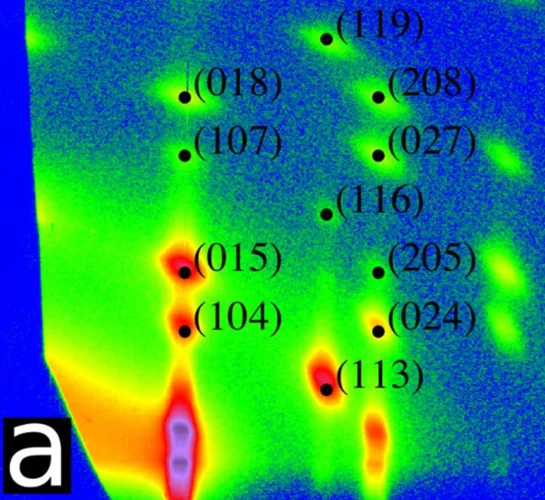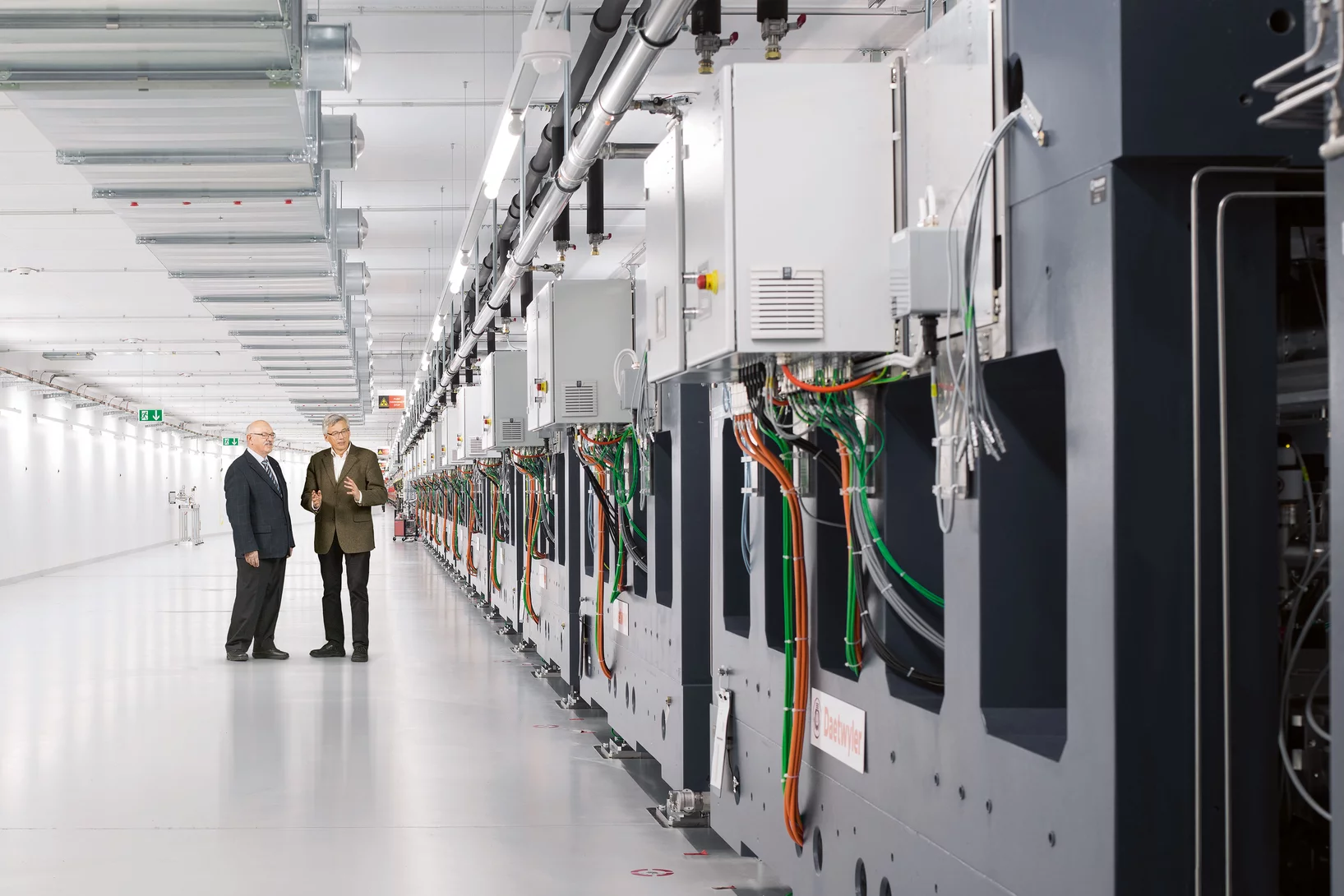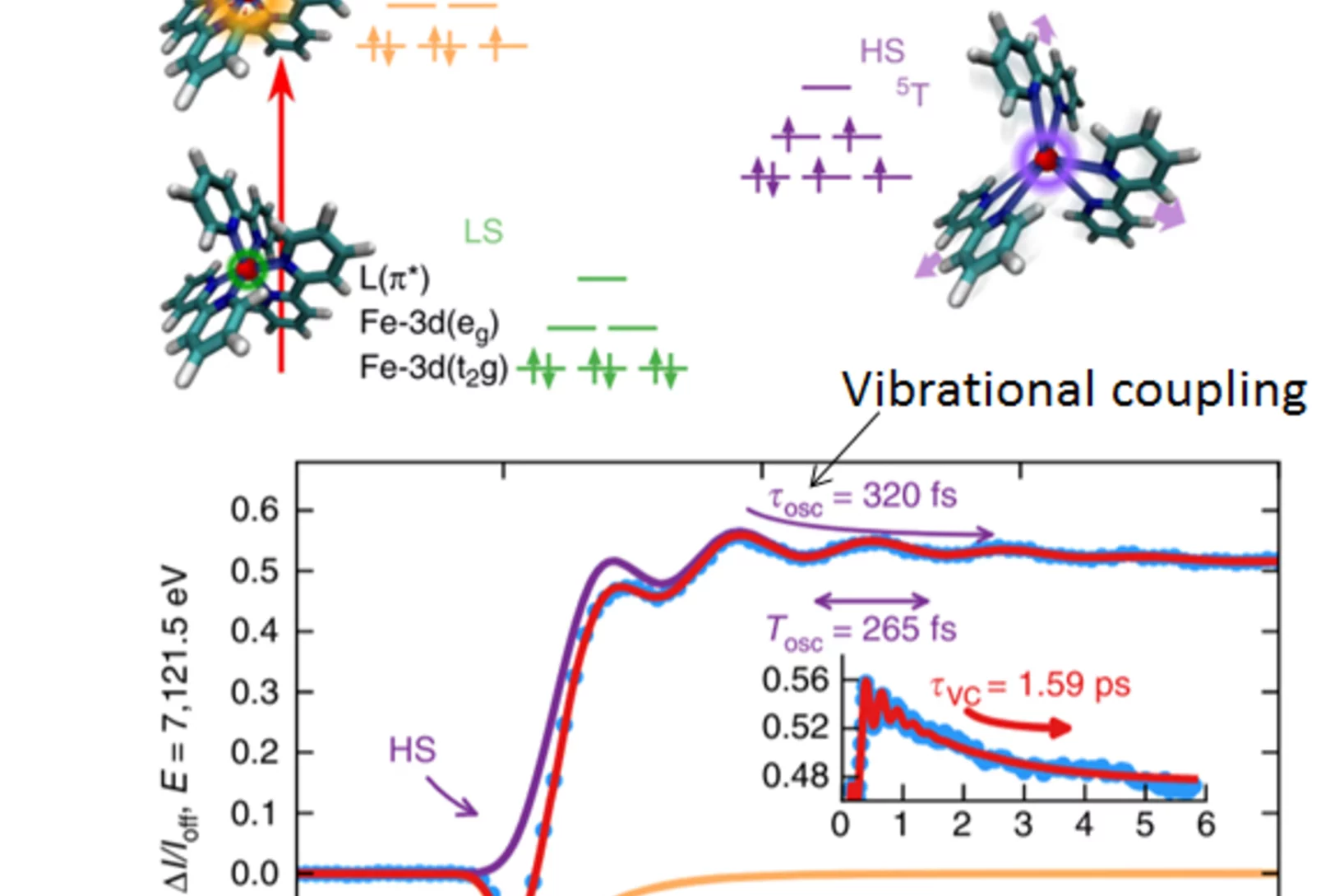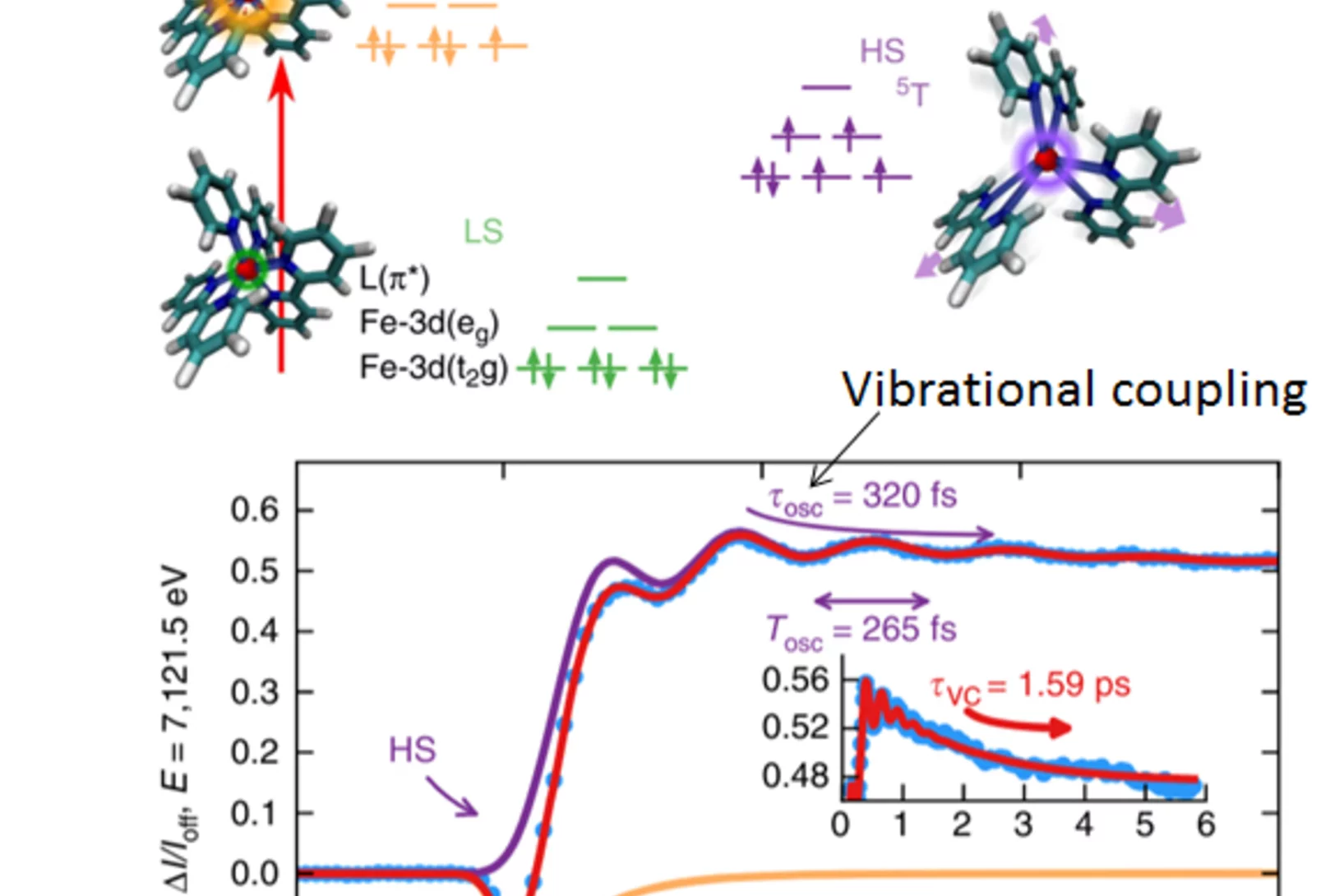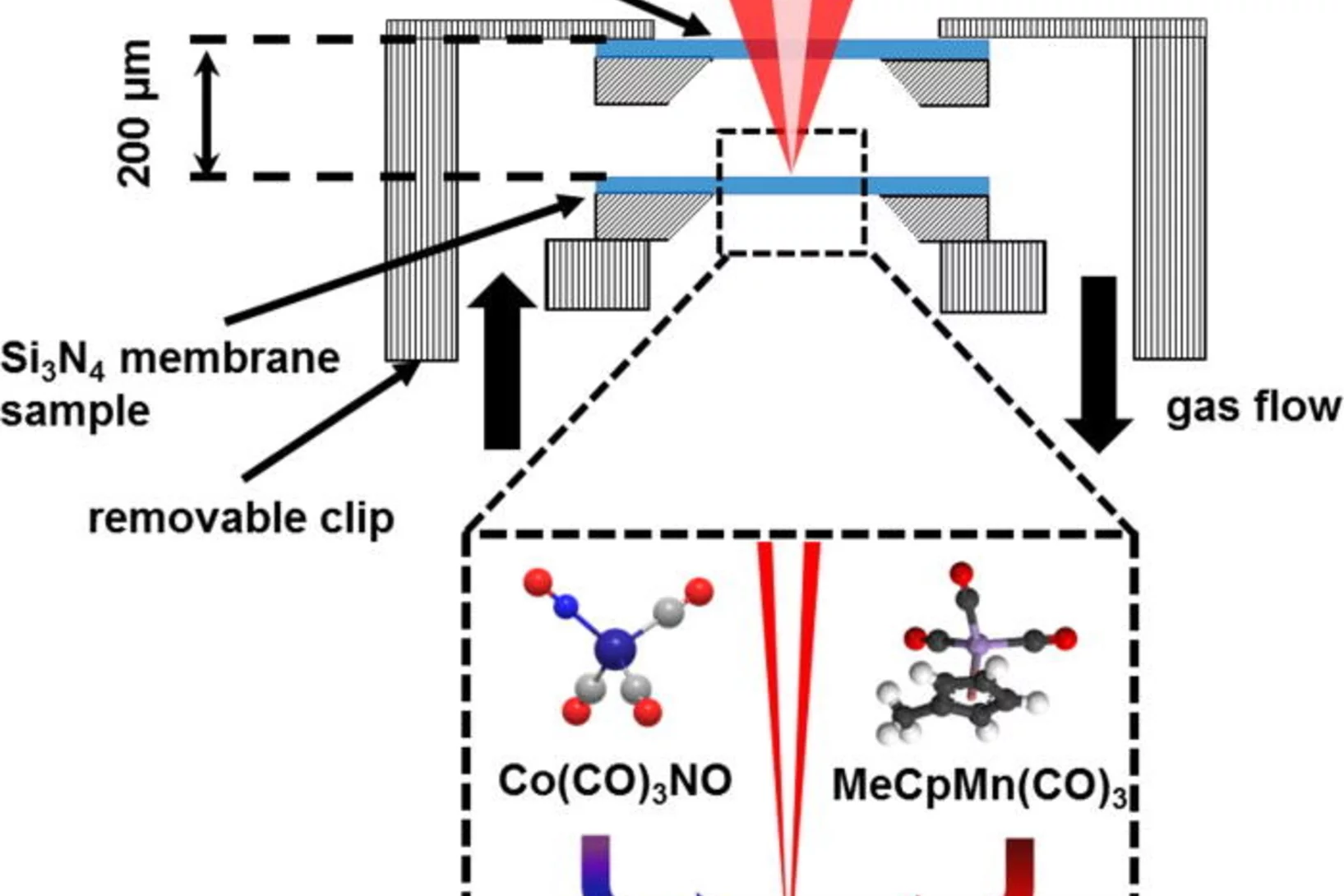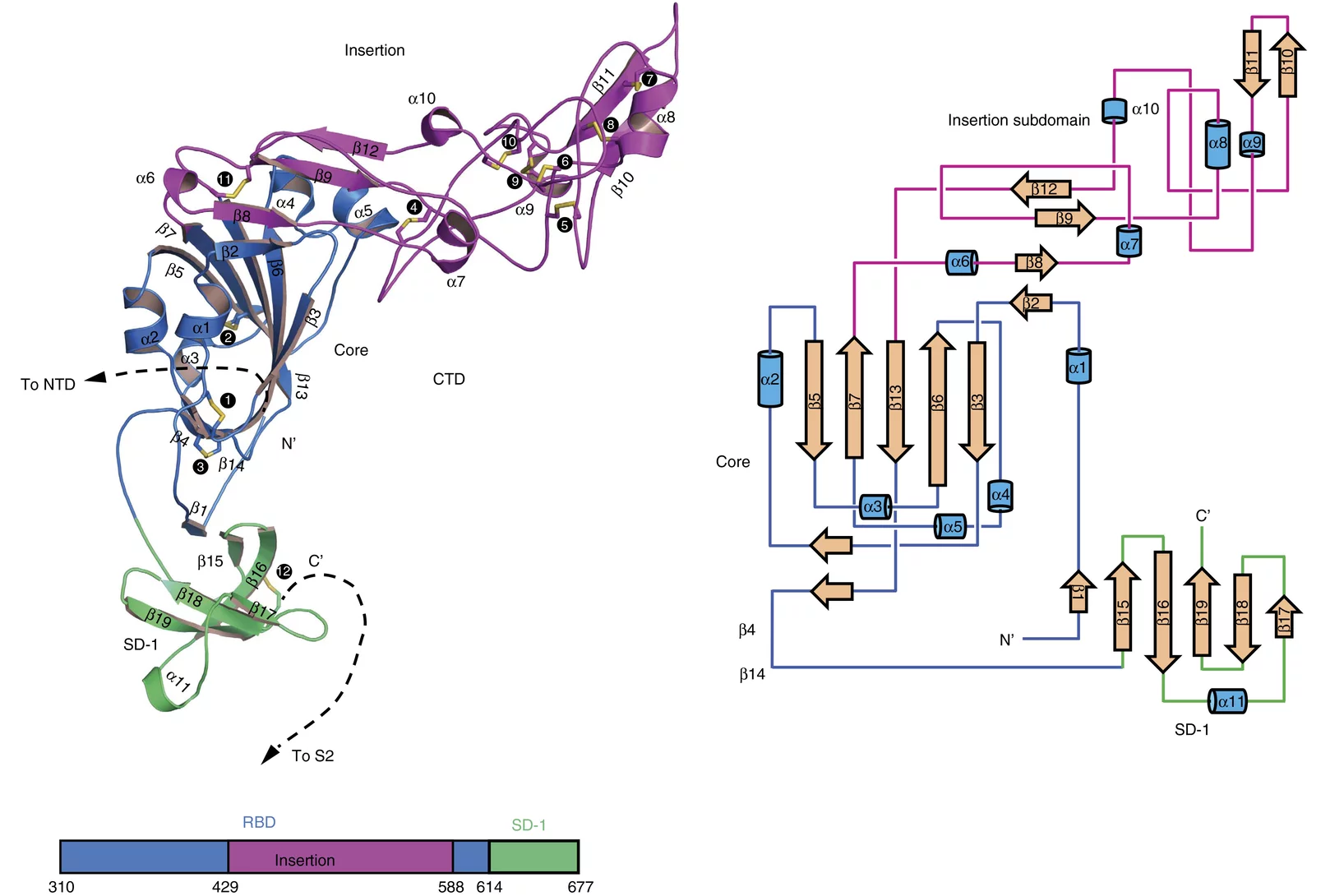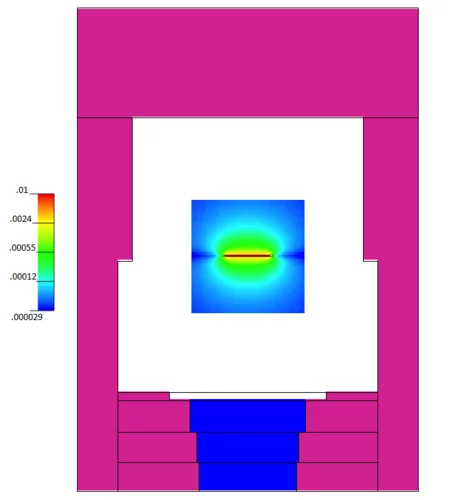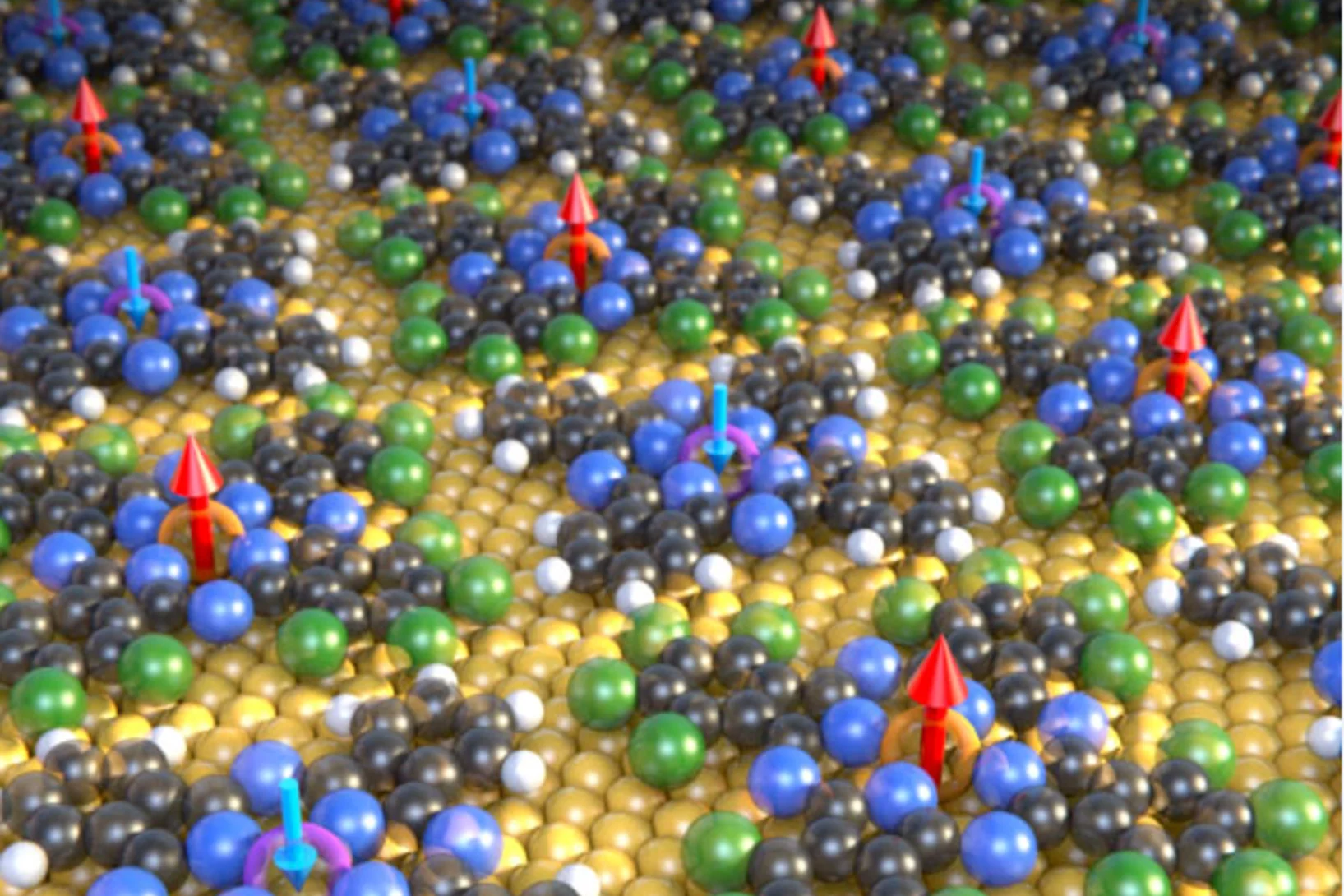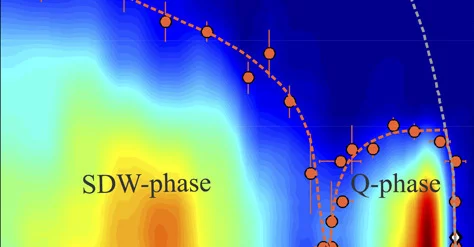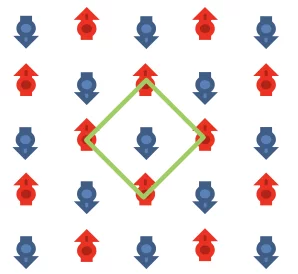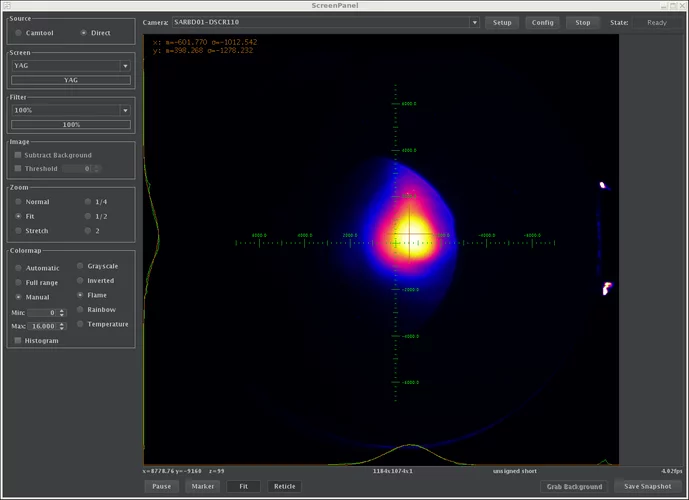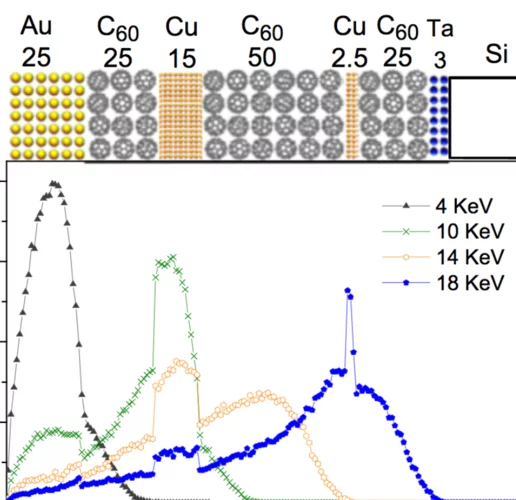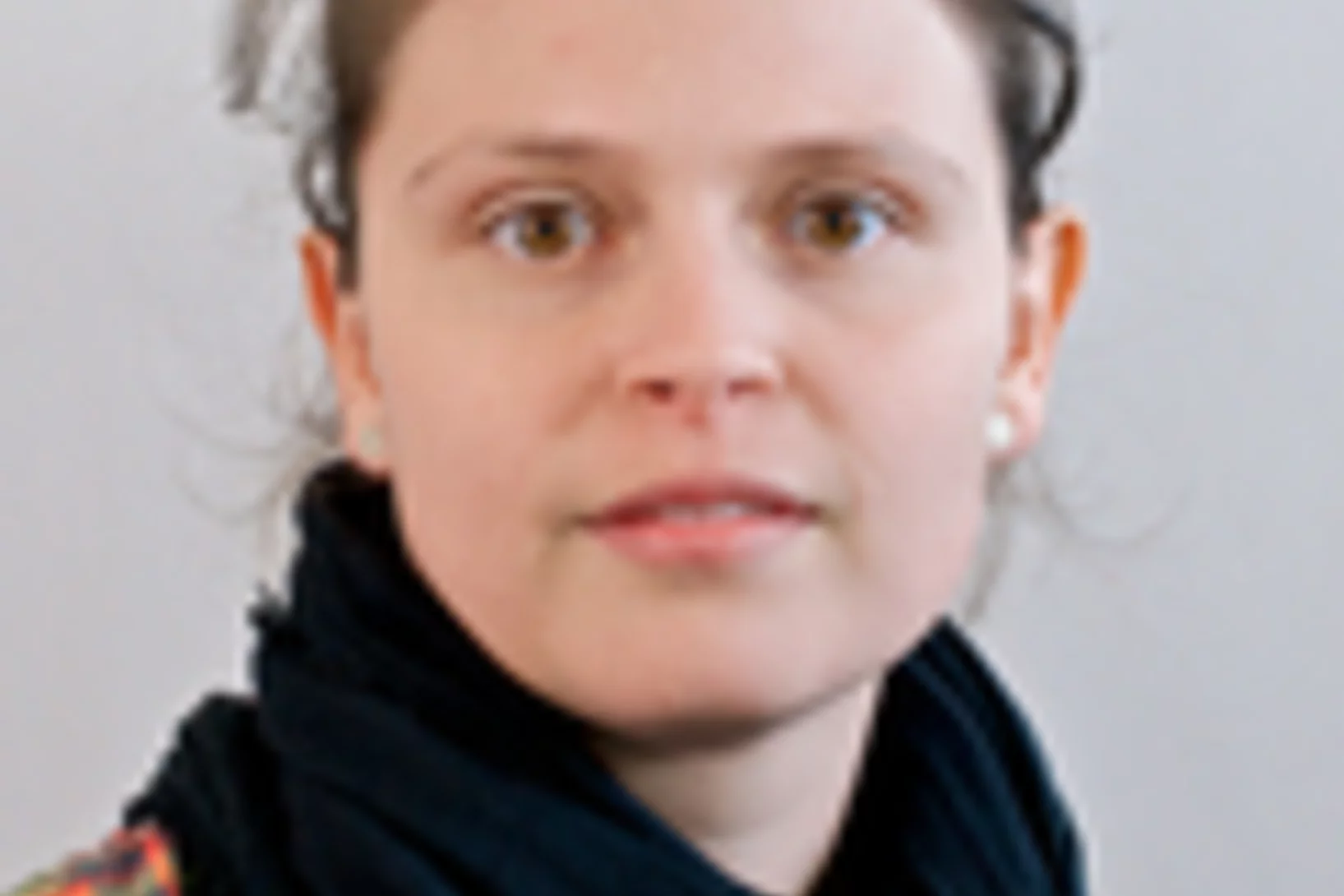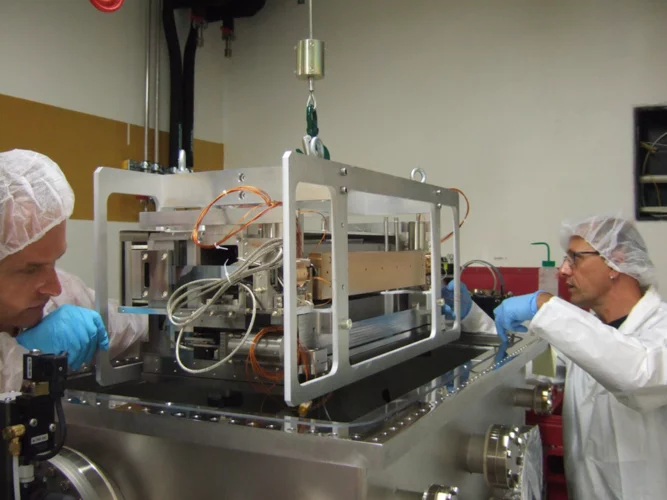Abkehr von der Kernenergie, Ausbau von Solar- und Windkraft, Energiegewinnung aus Biomasse, Senkung des Energieverbrauchs. Bis 2050 soll die Schweiz klimaneutral werden. Ein ehrgeiziges Ziel, welches durch die zunehmend herausfordernde geopolitische Lage dringlicher denn je geworden ist. Wie lässt sich in den nächsten Jahren eine nachhaltige und widerstandsfähige Energieversorgung für die Schweiz aufbauen? Wie können erneuerbare Energien optimal genutzt werden? Welche neuen Technologien sind besonders vielversprechend? Am PSI suchen Forschende nach Antworten auf diese entscheidenden Fragen.
Cover page of The Journal of Physical Chemistry
The paper titled "Core–Shell Structure of Palladium Hydride Nanoparticles Revealed by Combined X-ray Absorption Spectroscopy and X-ray Diffraction" by Aram L. Bugaev was published in The Journal of Physical Chemistry and made it on the cover of issue 33/2017.
Comparison of ultracold neutron sources for fundamental physics measurements
Ultracold neutrons (UCNs) are key for precision studies of fundamental parameters of the neutron and in searches for new charge-parity-violating processes or exotic interactions beyond the Standard Model of particle physics. The most prominent example is the search for a permanent electric-dipole moment of the neutron (nEDM). We have performed an experimental comparison of the leading UCN sources currently operating.
Nonlinear electron-phonon coupling in doped manganites
We employ time-resolved resonant x-ray diffraction to study the insulator-to-metal transition that is launched via resonant excitation of an infrared-active optical phonon mode in a half doped manganite. We find that the charge order reduces promptly with a highly nonlinear (quartic) dependence on excitation fluence.
Aus der Garage in die Welt
Im Jahr 1999 gründeten PSI-Forschende die Spin-off-Firma SwissNeutronics. Heute hat das Unternehmen 15 Mitarbeitende, verkauft hochpräzise Bauteile an Forschungseinrichtungen weltweit und hat doch noch immer seinen Sitz in der Kleinstadt Klingnau – nicht weit entfernt vom PSI.
Carolina Arboleda presented a talk contribution at the Swiss Congress of Radiology (SCR2017) in Bern
Carolina Arboleda, senior PhD student at TOMCAT, presented a talk entitled “Assessment of breast lesion malignancy using phase contrast imaging” at the Swiss Congress of Radiology, which highlighted the potential of X-ray grating-based phase contrast imaging to distinguish between benign and malignant lesions utilizing the absorption to dark-field signal ratio of associated calcifications.
Methods for Generating Highly Magnetically Responsive Lanthanide-Chelating Phospholipid Polymolecular Assemblies
Mixtures of 1,2-dimyristoyl-sn-glycero-3-phosphocholine (DMPC) and its lanthanide ion (Ln3+) chelating phospholipid conjugate, 1,2-dimyristoyl-sn-glycero-3-phospho-ethanolamine-diethylene triaminepentaacetate (DMPE-DTPA), assemble into highly magnetically responsive polymolecular assemblies such as DMPC/DMPE-DTPA/Ln3+ (molar ratio 4:1:1) bicelles.
Lucia Romano gives an invited talk at EIPBN 2017
Lucia Romano (guest professor at ETH and guest scientist at TOMCAT) has just returned from the largest conference devoted to electron, ion and photon beam technology and nanofabrication (EIPBN) in US, where she gave an invited talk about “Fabrication of high aspect ratio metal gratings for X-ray phase contrast interferometry”.
Grosse Hilfe für kleine Kinder
Wenn Kinder klein sind und Krebs haben, bedeutet das einen Einschnitt für die ganze Familie. Mit zielgerichteter Protonenbestrahlung und warmherziger Fürsorge versuchen die Mitarbeitenden am Zentrum für Protonentherapie des Paul Scherrer Instituts PSI den Kindern zu helfen.
Poster Prize for Marcin Gorzny at the Swiss Nanoconvention 2017
Dr. Marcin Gorzny, Post-Doc at LMN in the PSI career return program recieved a poster prize at the Swiss Nanoconvention 2017 for his contribution entitled: "Silicon chip as lipid membrane holder for serial crystallography experiments".
Coupled multiferroic domain switching in the canted conical spin spiral system Mn2GeO4
Despite remarkable progress in developing multifunctional materials, spin-driven ferro-electrics featuring both spontaneous magnetization and electric polarization are still rare. Among such ferromagnetic ferroelectrics are conical spin spiral magnets with a simultaneous reversal of magnetization and electric polarization that is still little understood. Such materials can feature various multiferroic domains that complicates their study.
Superlattice growth and rearrangement during evaporation-induced nanoparticle self-assembly
Understanding the assembly of nanoparticles into superlattices with well-defined morphology and structure is technologically important but challenging as it requires novel combinations of in-situ methods with suitable spatial and temporal resolution.
Successful PhD Defense
Johannes Schindler successfully defended his PhD at the University of Bern, entitled "An Extraction System for Radiocarbon Microanalysis of Dissolved Organic Carbon in Glacier Ice". The project was jointly funded by the University of Bern and the Paul Scherrer Institut.
SPS Award in Applied Physics awarded to Waiz Karim
The SPS 2017 Prize in Applied Physics is awarded to former member of the van Bokhoven Group Waiz Karim for his PhD thesis entitled "Metal nanostructures and their catalytic properties using top-down nanofabrication and single particle spectroscopy" which was honored with his 1st author publication "Catalyst support effects on hydrogen spillover" by W. Karim, C. Spreafico, A. Kleibert, J. Gobrecht, J. VandeVondele, Y. Ekinci, J. A. van Bokhoven, Nature, 2017, 541, 68–71.
Isomer-Selective Generation and Spectroscopic Characterization of Biofuel Intermediates
Online combustion analysis relies heavily on spectral data to detect reactive intermediates isomer-selectively to establish e.g. kinetic flame models. Due to the difficulty to generate these species cleanly, spectral data are rather scarce. Here we report on the selective generation of three picolyl radical isomers (C5H4N-CH2*) by deamination of aminomethylpyridines. Picolyl radicals are relevant in biofuel combustion, and could now be characterized by threshold photoelectron spectroscopy using synchrotron radiation. Vibrationally resolved bands and distinct ionization energies allow for isomer-specific detection of these elusive species in complex environments and permit us to explore new avenues in soot- and NOx formation kinetics.
Fate of Plutonium through a Geological Reactive Barrier
Natural geological and engineered barriers play a key role in protecting the environment and the anthroposphere from the hazardous impact of deposited waste or spreading contaminants. Such natural geological and engineered barrier materials are commonly complex and heterogeneous. In-situ multimodal microscopic studies under conditions relevant to deep geological formations are crucial to identify the reactive components and reaction pathways or to validate proposed immobilization mechanisms. The present study demonstrated that a simplistic description by a sole reactive component is not an adequate representation of the geochemical reactivity responsible for the immobilization of plutonium within a natural Clay Rock barrier. Multimodal chemical imaging studies on intact, undisturbed systems are absolutely essential to ascertain the geochemical reactivity for relevant geochemical conditions and settings.
Bis zur Grenze des Machbaren
Die Firma Daetwyler baute die Undulatoren für den Freie-Elektronen-Röntgenlaser SwissFEL des Paul Scherrer Instituts PSI auf den Zehntel einer Haaresbreite genau.
Observing switching of Molecules using Free Electron Lasers
Free electron lasers (FELs) like SwissFEL help scientists to understand the mechanisms that switch properties of materials which are the basis for functions in electronics, solar cells, chemistry and biology. By using ultrashort X-ray pulses it becomes possible to visualize the ultrafast rearrangements of electrons and atoms that enable the properties to switch in molecules or crystals.
Observing switching of Molecules using Free Electron Lasers
Free electron lasers (FELs) like SwissFEL help scientists to understand the mechanisms that switch properties of materials which are the basis for functions in electronics, solar cells, chemistry and biology. By using ultrashort X-ray pulses it becomes possible to visualize the ultrafast rearrangements of electrons and atoms that enable the properties to switch in molecules or crystals. An international consortium of researchers lead by Paul Scherrer Institute, Université de Rennes, and SLAC National Laboratory has now visualized the entire cascade of processes that lead to a change of the magnetic moment of electrons in a molecule within one trillionth of a second (10-12 s = 1 picosecond), using the FEL at Stanford, California (LCLS).
Additive Nanofabrication with Focused X-rays
Metal nanostructures can be fabricated by irradiation of suitable metal organic precursor molecules with a focused X-ray beam. This novel techniques offer the advantage of energy-selective deposition by switching of the incident photon energy due to the non-linear photon absorption cross-section of the precursor molecules for resonant excitation.
Towards understanding of human betacoronavirus HKU1 life cycle
Researchers from China and USA join forces with Swiss Light Source (SLS) macromolecular crystallography (MX) beamline scientists in a study, which aims at understanding an important step in the life cycle of the human betacoronavirus HKU1.
Realization of a combined band-Mott insulator
For decades, the mechanism of Mott phase in Ca2RuO4 has puzzled researchers. This material is a paradigmatic case of multi-band Mott physics including spin-orbit and Hund's coupling. Progress has been impeded by the lack of knowledge about the low-energy electronic structure. With our recent contribution, we provided-- using angle-resolved photoemission electron spectroscopy -- the band structure of the paramagnetic insulating phase of Ca2RuO4.
Monte Carlo Simulation of Scintillation Detector for Spent Fuel Characterization in a Hot Cell
Spent fuel characterization is necessary to improve nuclear fuel design, optimize core refueling patterns and manage the handling, transport and storage of spent fuel assemblies. The experimental characterization of spent fuels includes measuring their gamma and neutron emissions typically with high-purity Germanium and He-3 detectors. In the past few years, however, efforts to develop efficient and low-cost, fast and thermal, neutron detectors have guided the research to the development of new scintillation detectors. These scintillators offer good efficiency, fast-timing properties, and good pulse shape discrimination capabilities for dual gamma and neutron detection. Within the Laboratory for Reactor Physics and Thermal-Hydraulics (LRT), a preliminary analysis was performed through Monte Carlo simulations to design a measurement unit at the HOTLAB based on new scintillators for the detection of fast neutrons emitted by spent fuel. This semester work of Marianna Papadionysiou was presented at the ANS Student conference in April and received two awards for "Best Detection and Measurement" and "Best Overall Research".
Wafer-thin Magnetic Materials Developed for Future Quantum Technologies
For the first time, researchers have produced a wafer-thin ferrimagnet, in which molecules with different magnetic centers arrange themselves on a gold surface to form a checkerboard pattern. Scientists at the Paul Scherrer Institute, in collaboration with their research partners, published the findings in the journal Nature Communications.
Distinct, but not so different
Among superconducting materials, CeCoIn5 stands out as a rare case where superconductivity gives rise to magnetic order. An international team led by PSI physicist Michel Kenzelmann now reports that when small amounts of impurities are implanted into CeCoIn5, then two distinct magnetic phases appear — and these are surprisingly similar to one another.
Pressure-induced magnetic order in FeSe: A muon spin rotation study
The magnetic order induced by the pressure was studied in FeSe by means of muon spin rotation (μSR) technique.
First lasing at a wavelength of 4.1 nm
The electron beam energy of SwissFEL was recently increased to above 900 MeV by successfully bringing two new accelerating modules into operation. This allowed SwissFEL to produce laser radiation for the first time in the soft x-ray regime with a photon wavelength of 4.1 nm. During the next months, the electron beam energy will be progressively further increased with the goal of enabling first user experiments at a wavelength of around 0.5 nm towards the end of this year.
First lasing at a wavelength of 4.1 nm
The electron beam energy of SwissFEL was recently increased to above 900 MeV by successfully bringing two new accelerating modules into operation. This allowed SwissFEL to produce laser radiation for the first time in the soft x-ray regime with a photon wavelength of 4.1 nm. During the next months, the electron beam energy will be progressively further increased with the goal of enabling first user experiments at a wavelength of around 0.5 nm towards the end of this year.
Emergent magnetism at transition-metal-nanocarbon interfaces
Interfaces are critical in quantum physics, and therefore we must explore the potential for designer hybrid materials that profit from promising combinatory effects. In particular, the fine-tuning of spin polarization at metallo–organic interfaces opens a realm of possibilities, from the direct applications in molecular spintronics and thin-film magnetism to biomedical imaging or quantum computing.
Successful PhD Defense
Astrid Waldner has been awarded a PhD at the ETH Zurich for her thesis entitled, "Molecular level picture of the interaction between ice and trace gases". The project was funded by the Swiss National Science Foundation and lead by Thorsten Bartels-Rausch.
First SwissFEL Mirror Units ready to take X-rays
On May 11, 2017 the vacuum chambers of the first two offset mirrors have been closed eventually with the final gold- wire gasket and pumped down to ultra- high vacuum (goal: 1e-9 mbar). These mirrors are the key elements to switch the X-rays between the experimental stations. In pink beam mode they are the only optical elements for the X-rays on their way from the undulator down to the Alvra experiment.

